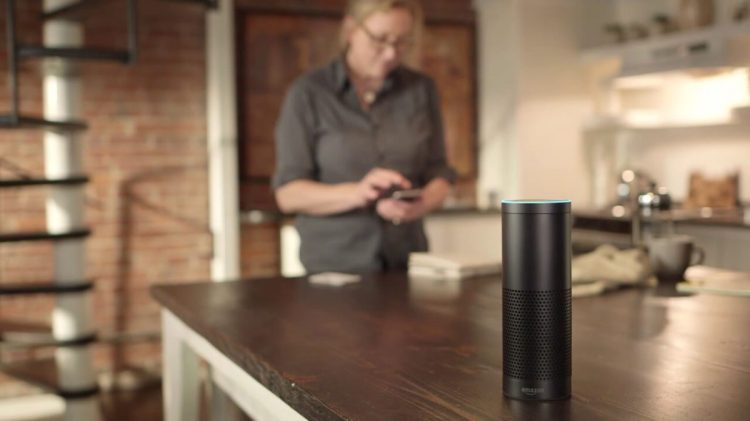The internet of things (IoT) is slowly changing the world. It already integrates with numerous industries and can be found in many homes around the globe. Research firms like Gartner and the International Data Corporation (IDC) predict monumental growth in terms of connected devices and profits.
IoT’s rising position, however, may not be wholly due to its own merits. Rather, it’s the intersection with artificial intelligence that is responsible for such advantages as workplace efficiency, cost savings on utility bills, and convenience.
While we’re already reaping rewards from the interplay between AI and the IoT, the duo still has a ways to go to reach its full potential. Consumers, designers, developers, government leaders, and manufacturers are worried about various aspects of the combined technologies. And those concerns must be addressed if we’re to develop a positive, forward-looking roadmap.
Views on artificial intelligence
When the internet of things and artificial intelligence are brought up in conversation, people tend to react in one of two ways. The first group gets excited. They talk animatedly about possibilities and applications to anyone who will listen. Meanwhile, the second group begins backing away with a look of skepticism or even fear.
June 5th: The AI Audit in NYC
Join us next week in NYC to engage with top executive leaders, delving into strategies for auditing AI models to ensure fairness, optimal performance, and ethical compliance across diverse organizations. Secure your attendance for this exclusive invite-only event.
To this second group, the two technologies provoke images of The Terminator, Blade Runner, Space Odyssey, and I, Robot. The thinking is that connected devices cannot be trusted and could endanger lives and livelihoods. The fear might seem overblown, but runaway self-driving cars, hacked medical devices, and other recent incidents provide grounds for this opinion:
- Self-driving cars. Last year, a Tesla self-driving car failed to see a semi-truck and crashed into it at a speed of 74 miles per hour. Tesla has shared data about the accident but gave little insight into why it occurred in the first place. And in September 2017 Uber reported that one of its self-driving cars was involved in a car crash.
- Medical devices. Lily Hay Newman at WIRED calls medical devices the “next security nightmare,” saying their vulnerabilities endanger not only networks but also people.
- Bluetooth. Last month, researchers ran an attack named BlueBorne to assess Bluetooth’s vulnerabilities. Their verdict? Any Android, Linux, or Windows device missing the latest updates could be compromised.
Even without those stories, a host of fears remain. Some people worry that smart devices, including robots, could put them out of work. Others experience anxiety about security and data privacy. Using AI-enabled devices might help these individuals take control of or better organize their lives, but they worry about how the data is collected, stored, and used.
The usefulness of IoT-connected AI
AI and the IoT are admittedly scary, at least on some level. But they are exciting too. By employing AI and the IoT together, humans can make great strides in a number of key areas:
- Smart agriculture. Business Insider reports that the IoT “is set to push the future of farming to the next level.” With this technology, farmers can remotely monitor equipment and irrigation, thereby saving time and money. Farmers also can look at data about crop yields and use the information to guide where and when to plant in future seasons.
- Transport and logistics. Deloitte Insights reports that the internet of things makes it easier for shipping companies to track products and drivers. However, as Deloitte points out, it also “[expands] the ways in which T&L firms function — cutting costs, increasing efficiency, and creating new revenue possibilities.”
- Global development. CIO contributor Joe Weinman, citing the 2016 Cisco-ITU report, says, “IoT solutions can make a dramatic impact on human welfare … Simple solutions such as networked temperature sensors on refrigerators containing vaccines or medicines literally can make a life or death difference.”
- Medical applications. A report from Aruba states that 60 percent of health care organizations across the world have started using the internet of things in their facilities. Current uses include insulin delivery, activity trackers for cancer treatment, ingestible sensors, depression-fighting apps, and more.
Such applications are happening on a grand, sometimes global scale. But the unification of AI and the IoT also offers benefits for communities, families, and individuals, even if it’s simply convenience. (Netflix bingers across the world breathed a sigh of relief when they learned AI may have solved the problem of buffering.)
Hope for the future of AI and IoT
The easy path forward would be to continue developing connected devices without taking people’s fears into consideration. However, this is both unethical and unadvisable from a practical standpoint. Unsecured devices put multiple parties at risk, from the person using the product to the company pulling data from it.
A better approach to the situation lies in analyzing the strengths, weaknesses, opportunities, and threats AI- and IoT-enabled devices offer. This will require addressing such pain points as IoT standards, privacy measures, and security. It could also involve education, job training, and general change management.
But whether we’re looking at something as mundane as faster streaming or as grand as smart cities, the internet of things — when bolstered by artificial intelligence — has potential to impact every aspect of our lives.
Alec Sears is a digital journalist who writes for BYU News, KSL, and Lucid Press.


